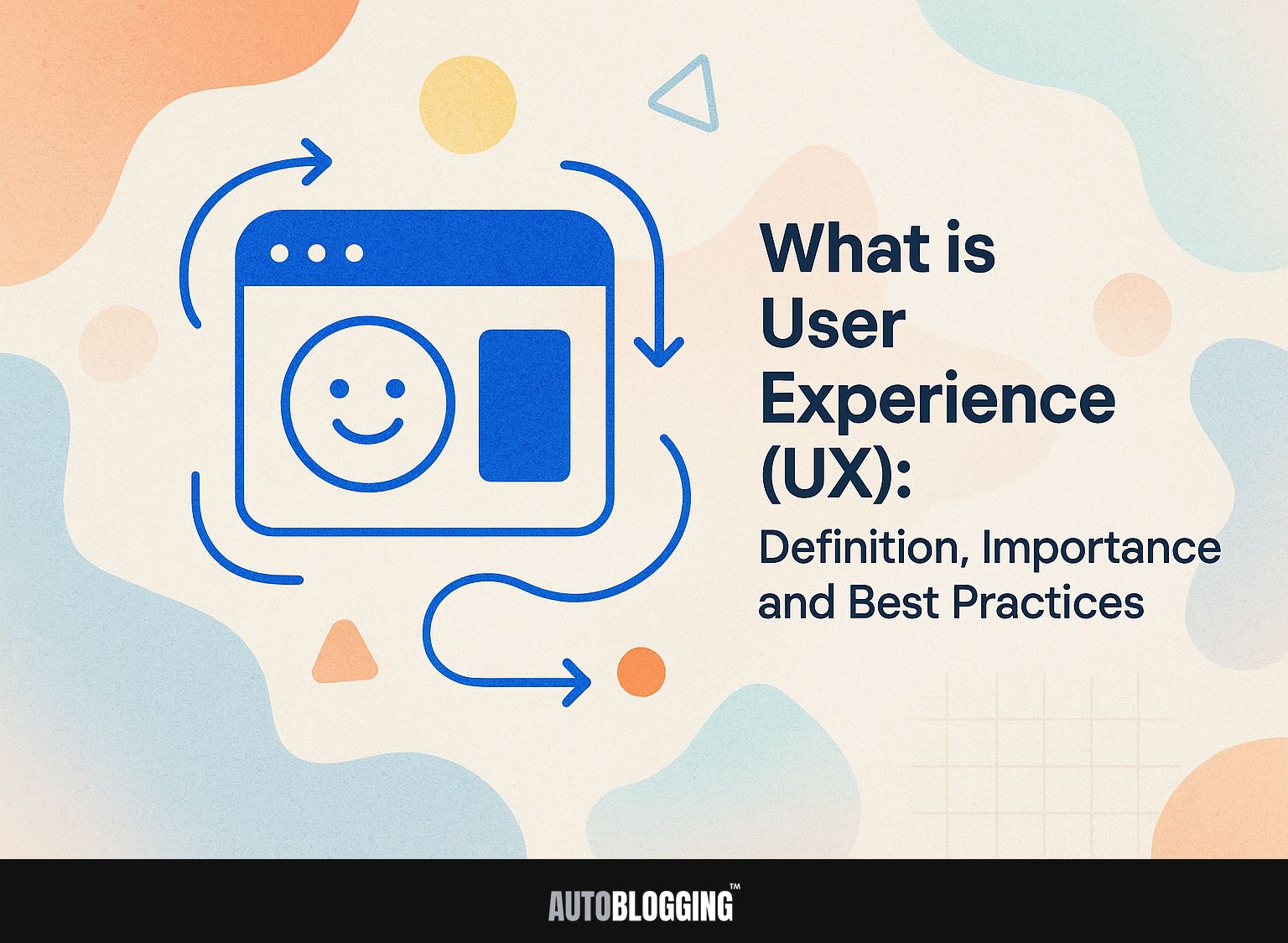
Knowing how to design user experience (UX) is important for creating successful products. A good user experience meets user needs and makes interactions easy and pleasant, which increases satisfaction and loyalty. This article explains what user experience is, why it matters in the tech industry, and tips to improve your UX design work. Learn how improving these parts can change your products and connect with your audience in a meaningful way!
Key Takeaways:
- User experience (UX) is the complete experience someone has when using a product or service.
- UX is very important for keeping customers happy, building brand loyalty, and helping a business succeed.
- Effective UX design involves key components such as usability, accessibility, interaction and visual design, and requires continuous research, testing, and prototyping.
Contents
- Importance of User Experience
- Key Components of User Experience
- Best Practices for Enhancing UX
- Tools and Resources for UX Design
- Future Trends in User Experience
- Frequently Asked Questions
- 1. What is User Experience (UX): Definition, Importance, and Best Practices?
- 2. Why is User Experience (UX) important?
- 3. What are some key elements of User Experience (UX)?
- 4. How can User Experience (UX) be improved?
- 5. What are some common mistakes to avoid in User Experience (UX) design?
- 6. How can businesses benefit from investing in User Experience (UX)?
1. Definition of User Experience
User Experience (UX) is the complete experience a person has when using a product or service, shaped by how easy it is to use, how accessible it is, and the emotional impact of its design.
It includes different parts such as organizing information, designing how users interact, and studying user behavior.
Information layout helps users find their way easily, while interaction design looks at how users work with the interface. For example, using tools like UserTesting to test how easy something is to use can show what needs fixing.
Accessibility factors, like using high-contrast colors for people with vision problems, are important. By focusing on these aspects, businesses can make their products easier to use, which makes customers happier and more likely to keep using them.
2. History and Evolution of UX
The concept of User Experience began in the 1950s, starting with ideas from cognitive science and developing into the design methods that focus on users today.
In the 1980s, Donald Norman gained recognition for emphasizing the importance of usability in design. His work led to the formal introduction of usability testing, shifting the focus from mere functionality to the emotional impact of design.
By the late 1990s, the idea grew to include factors such as accessibility and user satisfaction, which expanded the knowledge of UX. Today, designers look at how people use products and how these uses influence the entire experience and feelings, creating many opportunities for new ideas.
Importance of User Experience
Investing in User Experience is important because it directly affects how satisfied customers are, their loyalty to the brand, and business success. This is especially crucial as we look towards future strategies, such as those outlined in our insights into innovative approaches for 2025 and beyond, where user experience remains a key focus.
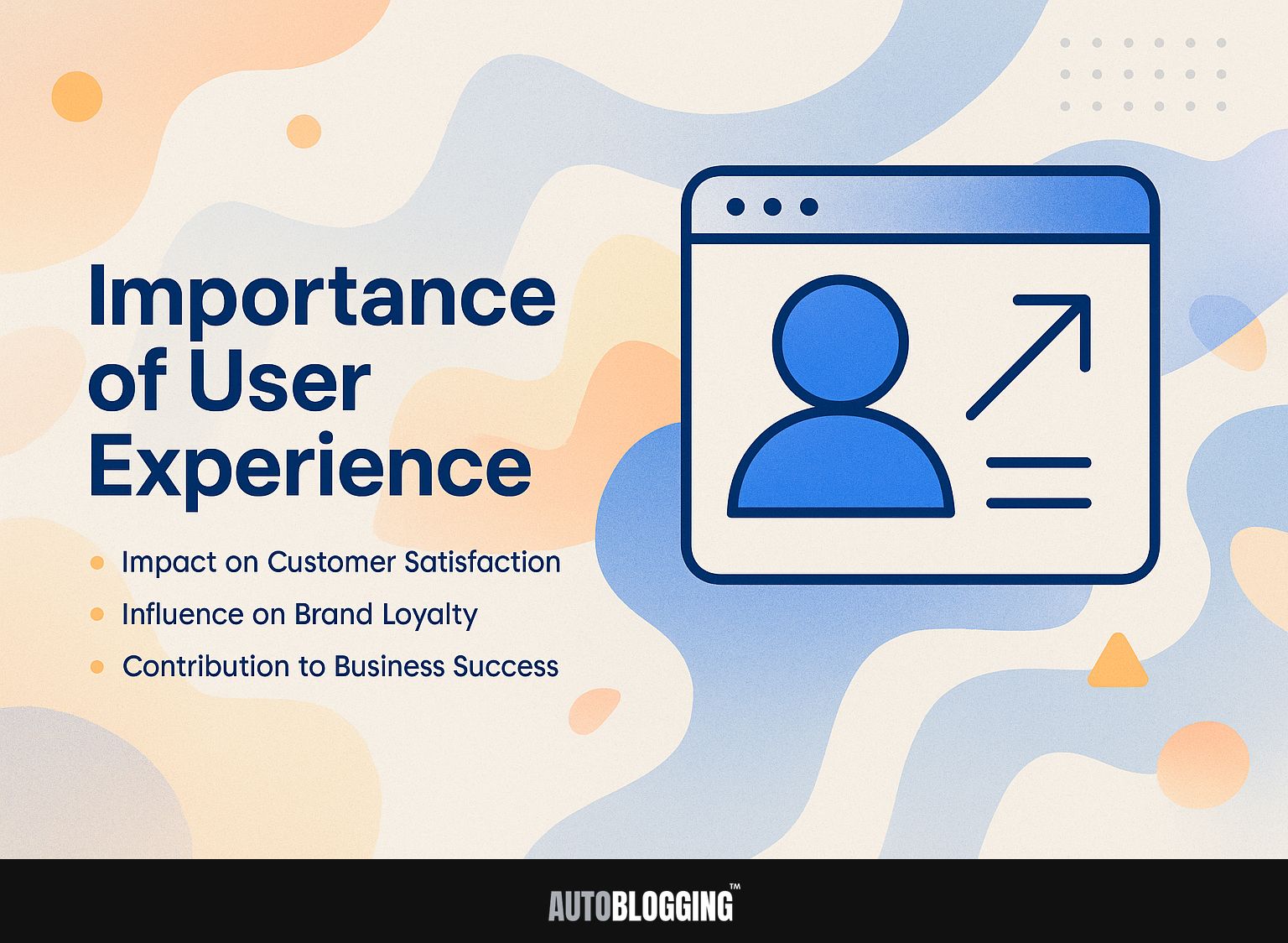
1. Impact on Customer Satisfaction
Effective UX design has been shown to increase customer satisfaction rates by up to 40%, directly impacting retention and loyalty.
Companies like Apple show how important user experience is for business success. Their focus on intuitive interfaces, seamless integration across devices, and an overall aesthetic appeal significantly contributes to customer loyalty.
Apple often tries out its products with people and listens to what they say to make the products better, ensuring they meet customer needs. Programs like Adobe XD and Figma allow designers to quickly make and test prototypes, resulting in better user experiences.
Spending money on UX makes customers happy and turns them into loyal supporters who will come back and tell others about the products.
2. Influence on Brand Loyalty
A smooth User Experience can increase brand loyalty by promoting positive user interactions that lead to frequent use and support.
Companies like Airbnb illustrate this perfectly. By often asking users for feedback, they keep making their platform better, making it simple to use and solving issues fast.
For example, after analyzing reviews, Airbnb redesigned their search filters to allow users to find accommodations that perfectly fit their needs. Responding quickly makes users happy and builds trust, encouraging customers to return.
High-tech companies should prioritize feedback methods, making user experience better a central part of their branding strategy to build long-term customer loyalty.
3. Contribution to Business Success
Companies that prioritize UX design can see a return on investment of up to 100% through increased user engagement and market value.
For example, IBM Garage integrates UX into development, ensuring prototypes are user-tested before launch. This method decreases the need for changes to the final product and improves user satisfaction, leading to loyalty and support.
Online stores like Amazon have demonstrated that simplifying the checkout process can reduce abandoned shopping carts by up to 35% by eliminating barriers.
Tools like Hotjar and Google Analytics allow businesses to study how users behave, making it easier to improve interfaces based on actual interaction data.
Key Components of User Experience
Knowing the main elements of User Experience is essential for making designs that are easy to use and satisfy different user needs. As a crucial component of UX, mobile optimization ensures that your designs meet the needs of users on various devices. Learn more about the techniques and best practices involved.
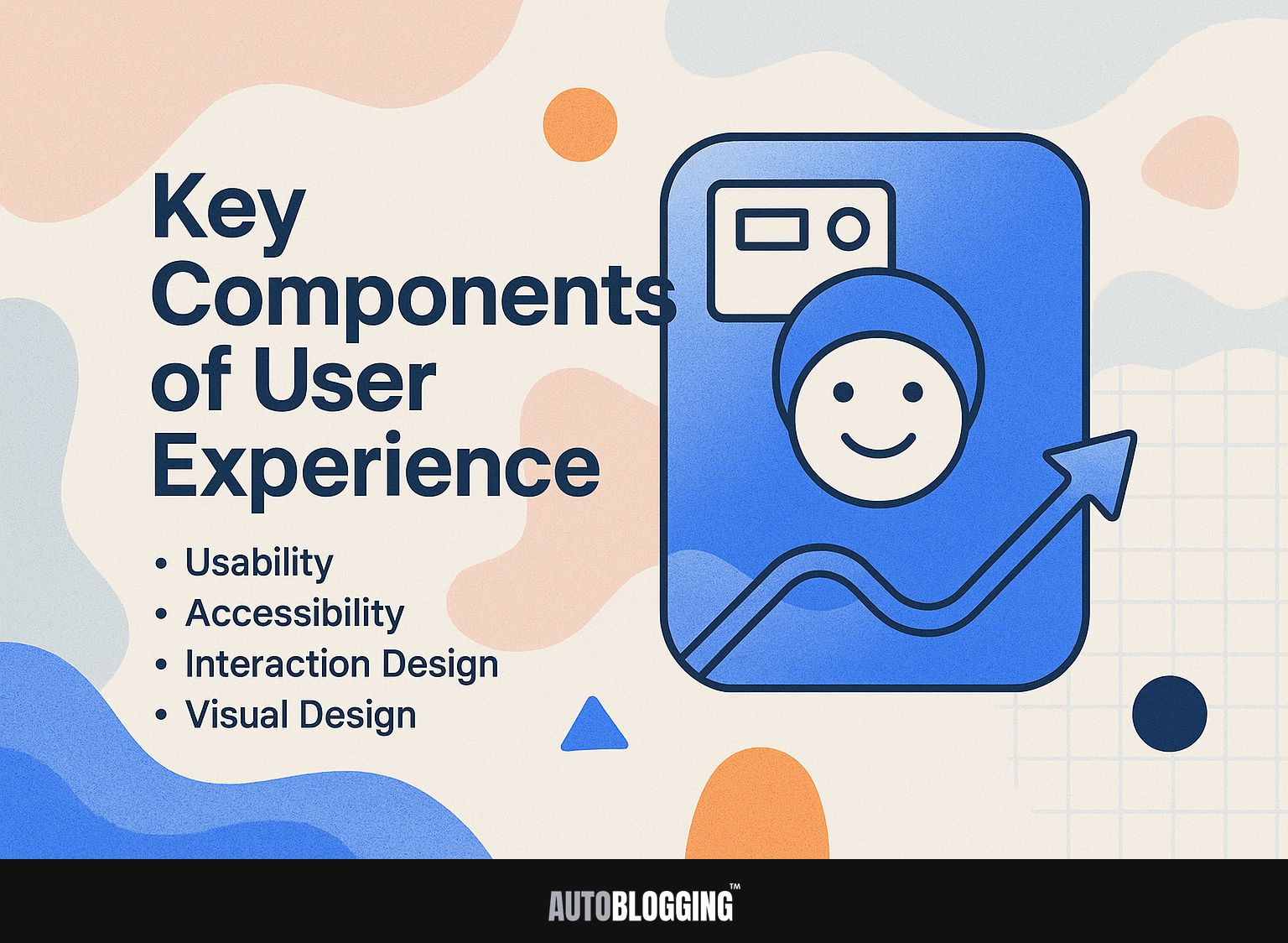
1. Usability
Usability is key in UX, concentrating on making products easy to use. This improves user satisfaction with a clear design.
To effectively measure usability, employ the System Usability Scale (SUS), a 10-item questionnaire that produces a score reflecting user satisfaction. Think about testing usability by watching users as they use your product. This approach can reveal pain points and areas needing improvement.
Tools like UserTesting and Lookback can help with this process by showing useful information about how users act.
Try to achieve an SUS score of 68 or higher, and use comments from testing sessions to make changes to your design for improved usability.
2. Accessibility
Accessibility makes sure digital products are usable by people with different abilities, highlighting the importance of following standards like WCAG.
Making UX design available to everyone helps people with disabilities and makes the experience better for all users.
For example, using tools like WAVE allows designers to evaluate accessibility compliance effectively.
Adding keyboard shortcuts and support for screen readers ensures the interface is accessible to all users. Testing products with different types of people can help designers find and fix possible issues. Ensuring everyone can use a product makes it more popular and enjoyable for a wider audience.
3. Interaction Design
Interaction Design focuses on creating engaging interfaces with well-defined user flows, enhancing the overall interaction experience.
Good user flow and ease of movement are key parts of interaction design, as shown in products like the iPhone. Its intuitive touch interface guides users through features with minimal effort.
For example, the use of familiar gestures, such as swiping and pinching, enables seamless interaction. Clear button animations and well-arranged visuals make it easy for users to interact with and find their way around the interface.
Tools like Figma or Adobe XD can be employed to prototype these interactions, allowing designers to test user flows before final development.
4. Visual Design
Visual Design is key in influencing how users feel and think, making it a critical element of how users interact with a product.
The look of a product influences how users engage with it. For instance, Apple’s clean and simple design gives a feeling of elegance and ease.
Using design principles such as contrast, alignment, and balance can improve usability. Look at the Spotify app: its bright colors and tidy design make it enjoyable to use and invite users to look around.
Design decisions can also trigger feelings; gentle colors can create a sense of calm, while strong fonts might create excitement. In the end, these parts combine to create trust and encourage people to stay loyal.
Best Practices for Enhancing UX
Using effective methods in User Experience design can greatly improve how easy it is to use digital products and how happy users are with them. For example, understanding what mobile optimization entails can be critical, as more users access digital products through their mobile devices. By incorporating these optimization techniques, the overall user experience can be significantly enhanced.
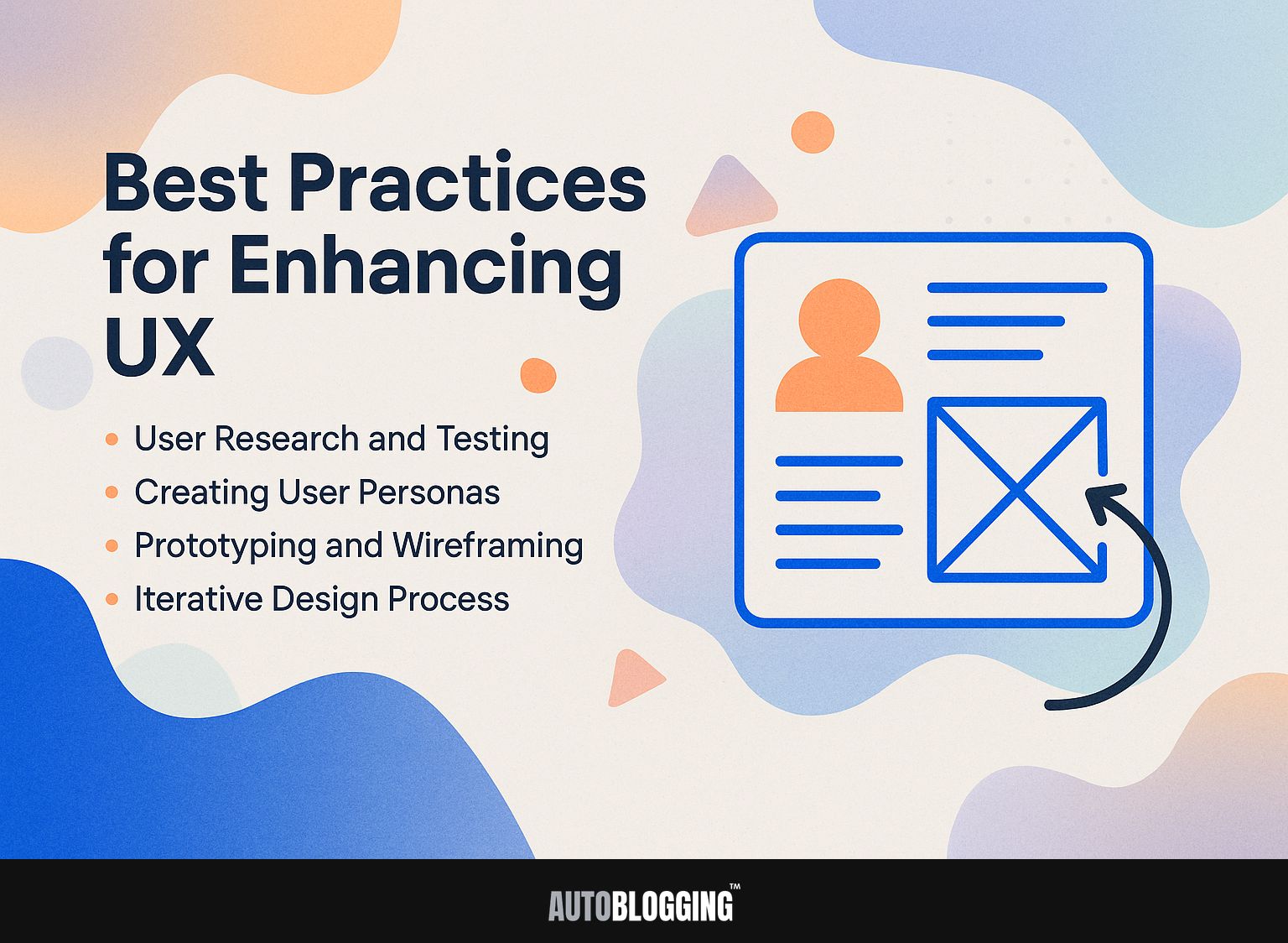
1. User Research and Testing
Doing detailed user research and testing is important for knowing what users like and need, which results in better design results.
To achieve this, begin by using surveys and interviews. Tools like SurveyMonkey can help you create specific surveys to collect numerical data, while Zoom is perfect for holding detailed interviews to find qualitative information.
Next, use websites like UserTesting.com. This tool lets you watch real users as they use your design, giving important feedback on how easy it is to use. Collect this information often to guide regular design changes, ensuring your product meets user needs.
2. Creating User Personas
Creating user personas helps designers understand target audiences by capturing essential user behaviors and motivations.
Start by gathering information from users using surveys, interviews, and reviewing analytics. Gather details on demographics, challenges, and goals.
A simple persona template might include sections like:
- Name: Tech-Savvy Tom
- Age: 30
- Occupation: IT Specialist
- Goals: Streamline work processes
- Frustrations: Too many software tools
This information makes your audience more relatable and helps make design choices. Aim for 3-5 personas to cover different segments of your audience effectively, enhancing user-centric product development.
3. Prototyping and Wireframing
Prototyping and wireframing are important steps in design. They help create early visual models and test design ideas.
To create a wireframe for a simple app, start with these steps:
- First, define your app’s primary purpose and identify the key user flows.
- Next, sketch a layout using tools like Figma or Sketch, focusing on element placement without detailing functionality.
- Use simple components to create buttons, menus, and content areas.
- Make changes based on feedback to keep the interface easy to use and understand.
This process typically takes a few hours but lays a solid foundation for further development.
4. Iterative Design Process
A continuous design approach involves regularly collecting user feedback, encouraging new ideas, and improving how users interact with the product. To implement this approach effectively, start by embracing design thinking principles.
Start by asking people questions through interviews and surveys to understand their needs. Next, define the problem clearly based on this feedback. Then, ideate multiple solutions, encouraging creativity within your team.
Make basic models of these ideas and test their usefulness to get more feedback. Make changes to your designs based on user feedback, improving them with each round.
Tools like Figma and Adobe XD help create prototypes and work together, making the design process easier.
Tools and Resources for UX Design
UX designers have access to many tools and resources, including software, online courses, and communities that encourage teamwork and learning.
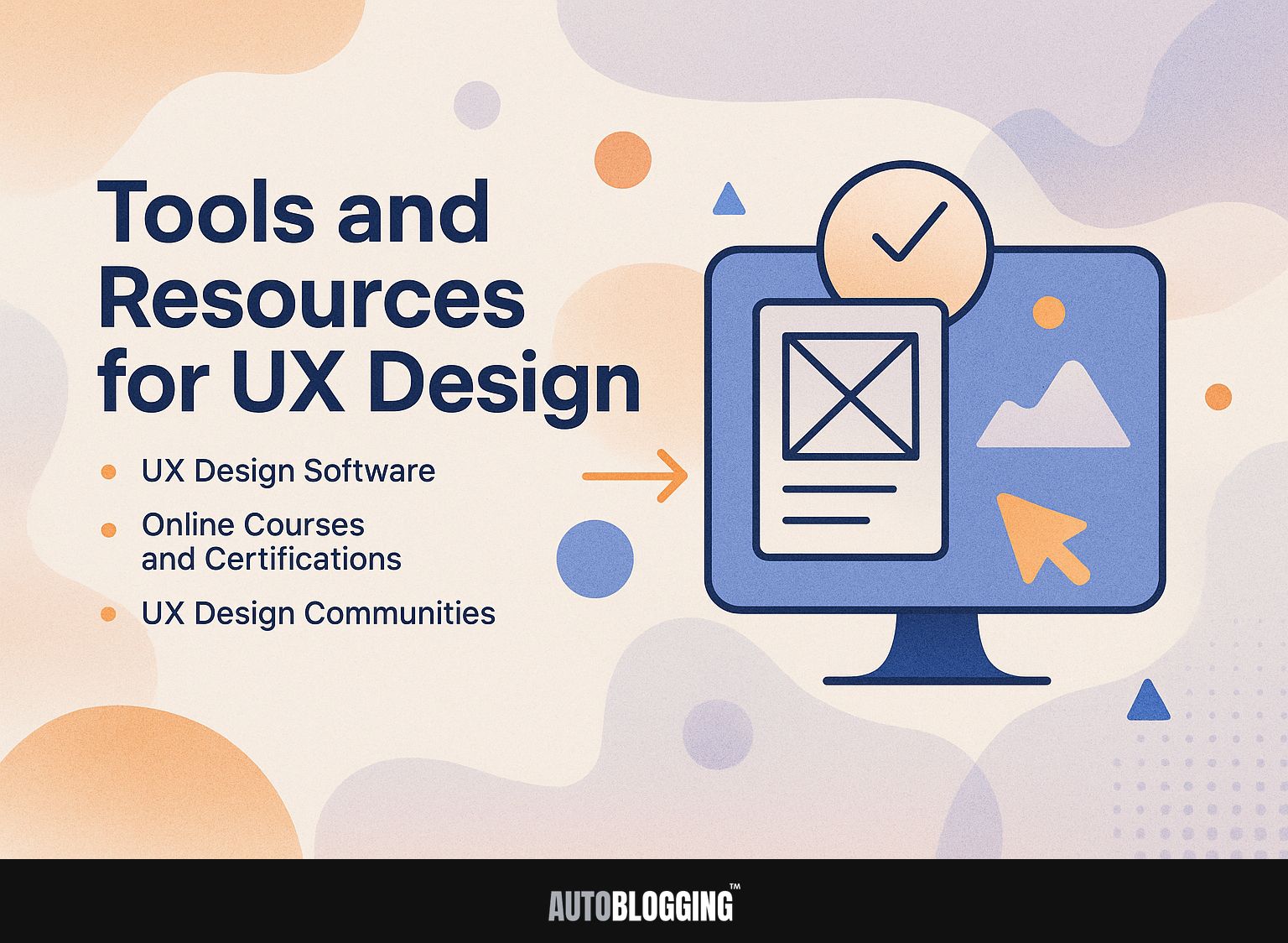
1. UX Design Software
Popular UX design software includes Figma, Adobe XD, and Sketch. Each program has its own features that improve the design process.
To compare these tools directly, consider the following:
| Tool | Price | Key Features | Best For |
|---|---|---|---|
| Figma | Free-$45/mo | Real-time collaboration | Teams and remote work |
| Adobe XD | $9.99/mo | Integration with Adobe Suite | Creative professionals |
| Sketch | $99/year | Extensive plugins and libraries | macOS users |
When choosing the best software, consider your team’s needs-Figma excels for collaboration, while Adobe XD is ideal for those heavily invested in Adobe products.
2. Online Courses and Certifications
Online courses and certifications are very useful for those who want to become UX designers. They provide organized learning tracks through platforms such as Coursera, Udemy, and the Nielsen Norman Group.
Coursera offers the Google UX Design Professional Certificate for approximately $39 per month, spanning about six months, and is highly praised for its hands-on projects.
Meanwhile, Udemy has “User Experience Design Essentials” available at a lower price, around $19.99 for unlimited access. This is a short course that lasts a few hours and gives a basic explanation of the topic.
The Nielsen Norman Group offers intensive UX conferences and workshops, ranging from $1,200 to $3,500, known for their depth and expert instructors. Each of these programs has received positive reviews for enhancing practical skills in the UX field.
3. UX Design Communities
Joining UX design communities can provide essential networking opportunities, access to resources, and platforms for sharing knowledge among professionals.
Two popular UX design communities worth exploring are:
- UX Design Slack
- Designer Hangout
In UX Design Slack, members talk instantly, share project information, and work together on problems. Designer Hangout, on the other hand, regularly organizes meetups and webinars, helping people connect better and share knowledge.
Getting involved in these groups improves your skills and creates job opportunities and chances for guidance. Make it a habit to join conversations, ask questions, and share your own experiences to maximize the benefits.
Future Trends in User Experience
As technology develops, User Experience also shifts.
Upcoming trends point to increased use of AI, voice controls, and immersive technologies, which can be seen as part of the evolution from Web 2.0 (our guide to Web 2.0 characteristics offers insights into these changes).

1. AI and Machine Learning in UX
AI and machine learning are altering user interactions by providing personalized experiences and predictions that help in making design decisions.
Tools such as Adobe Sensei use AI to study user actions and propose design changes instantly. This allows designers to create interfaces that adjust based on user preferences, making them more interesting.
Using chatbots like Drift improves customer interaction by providing fast, personalized responses to their inquiries. By using these technologies, companies can significantly reduce the time needed for designing, making work faster and creating products that better fit what their target audience desires.
2. Voice User Interfaces
Voice User Interfaces (VUIs) are becoming increasingly popular, requiring UX designers to innovate how users interact with technology.
To design effective VUIs, focus on clarity and context. Use short instructions to direct users, and give feedback that is quick and related to their actions.
Use natural language processing to change responses according to what the user wants. For example, instead of asking, “What do you want to know?” try a more interesting question like, “Do you want to hear today’s news or see the weather?”
Include visual aids for individuals who are deaf or hard of hearing to make sure everyone can access VUIs. By doing this, designers can create interfaces that improve the user experience for all.
3. Virtual and Augmented Reality
Virtual and Augmented Reality are expanding what users can do, making experiences more immersive and interactive.
Companies like Electronic Arts have used AR and VR to make engaging and interactive games. For instance, their use of VR in games allows players to physically interact with the environment, increasing immersion.
Challenges persist, such as high development costs and the need for specialized hardware. There are chances to design custom experiences that can change with user choices, using Unity for development.
By prioritizing user-centered design, businesses can effectively integrate these technologies to stand out in a competitive market.
Frequently Asked Questions
1. What is User Experience (UX): Definition, Importance, and Best Practices?
User Experience (UX) is the complete experience someone has while using a product or service. This includes a user’s emotions, attitudes, and perceptions while using the product. When creating products and services, make sure to focus on user experience for a positive outcome. Good UX practices include knowing what users want, doing user research, and regularly testing and making the user experience better.
2. Why is User Experience (UX) important?
User Experience (UX) is important because it directly impacts a user’s satisfaction and perception of a product or service. A well-designed UX can lead to increased customer loyalty, engagement, and conversion rates. It can set a product apart from others and result in business success.
3. What are some key elements of User Experience (UX)?
Some key elements of User Experience (UX) include usability, accessibility, desirability, and value. Usability is about how simple it is to use a product. Accessibility means making sure many different people can use the product. Desirability means making users feel good about a product, while value is how useful and satisfying the product is for the user.
4. How can User Experience (UX) be improved?
User Experience (UX) can be improved through user research and testing. This means learning what users want and how they act, collecting their opinions, and always making changes based on this input. It’s important to focus on designing with the user in mind and regularly collect feedback from users to keep the user experience positive.
5. What are some common mistakes to avoid in User Experience (UX) design?
Some frequent errors in User Experience (UX) design are ignoring what users want, building a complicated or unclear interface, and skipping user research or testing. It is also important to avoid using too much or too little design and to prioritize simplicity and user-friendliness in the design process.
6. How can businesses benefit from investing in User Experience (UX)?
Businesses can benefit from investing in User Experience (UX) by improving customer satisfaction, increasing customer loyalty and retention, and differentiating their product or service from competitors. A good user experience can improve conversion rates and help businesses succeed. Investing in UX can help businesses avoid expensive redesigns and make products or services work better over time, saving both time and money.
